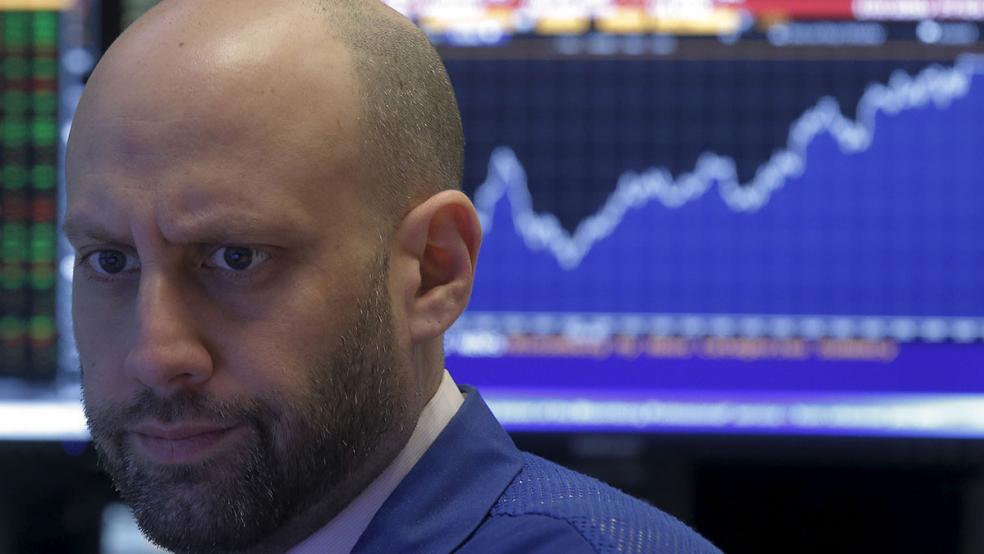And just like that, fear is in the air again.
I’m not just talking about the Orlando shooting. After large-cap stocks pushed to levels not seen since November, market bears emerged from hibernation last week thanks to a collection of concerns — including an upcoming Federal Reserve policy meeting, weakness in crude oil as supply concerns ease and growing worries the United Kingdom could really leave the European Union.
While stocks merely retraced recent gains, the CBOE Volatility Index (VIX), known as Wall Street's "fear gauge," surged up and out of a tight three-month sideways pattern thanks to the largest one-day gain since January. The takeaway: The long calm investors have enjoyed in recent months appears to have ended.
Aside from the VIX, there has been some notable action in crude oil and bonds as well.
The rally in Treasury and other government bonds, which are pushing down long-term interest rates, is being driven by "Brexit" fears in Europe (following the release of a surprise poll showing growing support for "Leave") and jitters about a more hawkish-than-expected Fed heading into Wednesday’s policy announcement, press conference and release of updated economic projections. Current odds of a July rate hike stand at 40 percent.
Related: El-Erian Says the Global Economy Needs Governments to Step Up
Government bonds worldwide have been rallying, pushing U.S. 10-year yields under 1.7 percent — a level that was last seen during the stock market rout at the beginning of the year. German 10-year bund yields traded below 0.03 percent. Around $10 trillion in global government bonds are now trading with a negative yield, a vote of no confidence in the recovery from fixed-income traders.
The Brexit concerns have been magnified by the fact the "Remain" campaign strategy has relied on fear mongering about possible financial market turmoil should the European Union lose one of its main members — that seems, for now, to be having the opposite of the intended effect on British voters. This is yet another echo of the establishment-vs.-democracy dynamic that's been in play since the Eurozone debt crisis first appeared in 2010, which resulted in the Greece bailout referendum last year.
Although the Greek people voted against accepting draconian bailout terms, including tax hikes and benefit cuts, their government enacted them anyway under massive pressure from creditors including the European Central Bank and the International Monetary Fund. I don't think a "take your bureaucracy and stuff it" vote from the British will be so easily ignored.
Related: Here’s Why George Soros Is Investing in Gold
The resulting drop in yields is putting the hurt on big bank stocks. That's because the gap between short-term and long-term interest rates — which directly impacts bank profitability via net interest margins — is falling. Traders are responding, pushing stocks like Bank of America (BAC) lower. The stock has broken through five-month uptrend support. If early April lows near $13 don't hold, a retest of the February lows would be increasingly likely.
As for crude oil, West Texas Intermediate dropped back below the $50-a-barrel level on Friday following an increase in U.S. drilling rig counts and production. U.S. crude output has jumped by the most since the first week of January. Rig counts are up by the most since December and have jumped for two weeks in a row.
This was a predictable response to the near doubling of energy prices since February, driven initially by hopes of a Russia-OPEC supply cap agreement (which never took hold) and, more recently, by short-term supply disruptions (in Nigeria and Canada, mainly). The rebound in prices helped ease energy sector default concerns and boost energy stocks. But after warnings signs emerged, including aggressive hedge selling by producers looking to lock in current prices for future pumping activity, oil looks vulnerable to a pullback.
Related: Stocks Are Dangerously Expensive Right Now
Whether or not stocks can quickly recover and push the Dow back over the 18,000 level depends, in large part, on how the market responds to the Fed's big day on Wednesday. With an ongoing earnings recession (profits down four quarters in a row), a tightening labor market threatening to boost wage inflation, election uncertainty and a classic supply-vs.-demand response underway in oil, the outlook doesn't look good.







